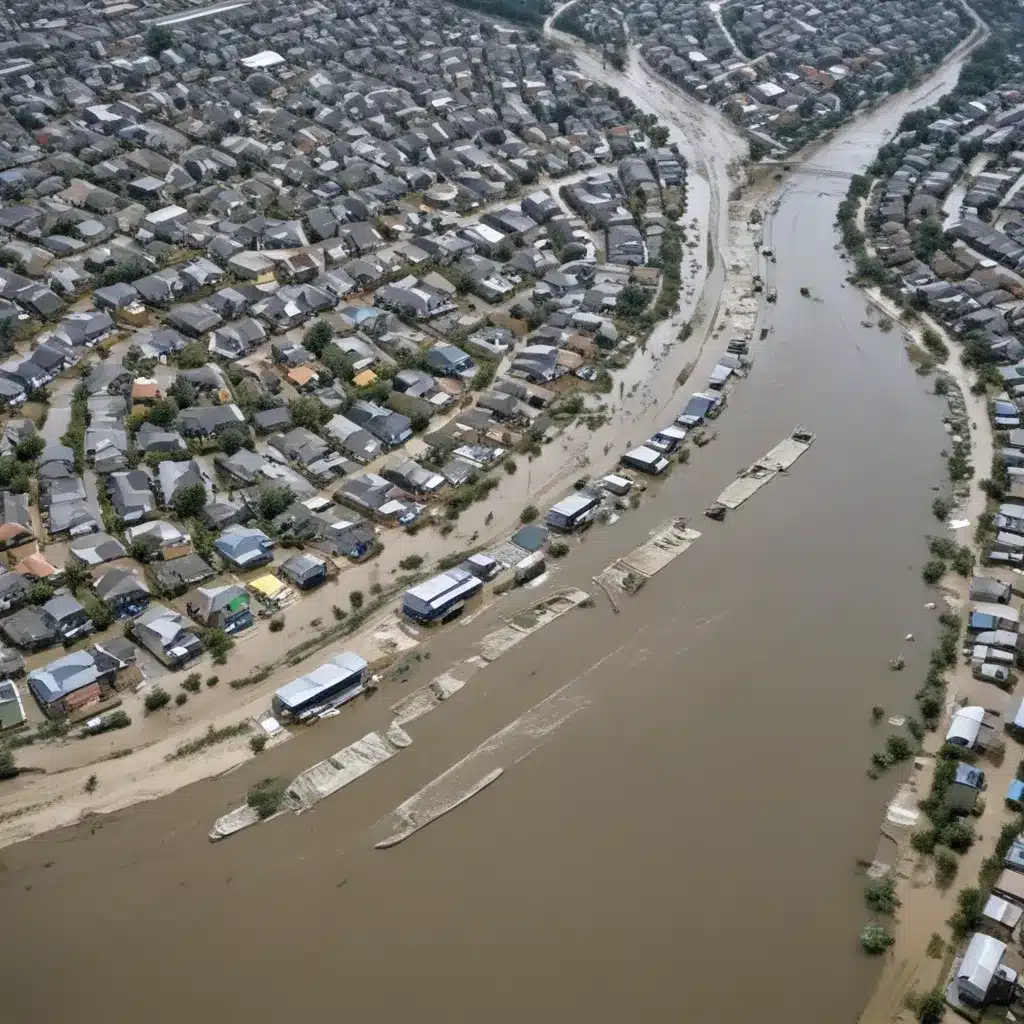
In the ever-evolving landscape of flood control and water management, artificial intelligence (AI) has emerged as a game-changing tool, offering unprecedented capabilities in predictive modeling, early warning systems, and adaptive decision-making. As the frequency and severity of extreme weather events continue to escalate due to climate change, the need for sophisticated flood mitigation strategies has become more pressing than ever.
Now, this might seem counterintuitive…
Leveraging the power of machine learning algorithms and real-time data integration, AI-driven flood management systems are revolutionizing the way we approach this critical challenge. By harnessing the vast amounts of hydrological, meteorological, and geospatial data available, these advanced technologies can provide flood control specialists with unparalleled insights, enabling them to anticipate, prepare for, and respond to flooding events with greater accuracy and efficiency.
Predictive Flood Modelling
At the heart of this AI-powered revolution in flood control lies the development of predictive flood modelling. These sophisticated algorithms combine historical data, real-time sensor readings, and sophisticated weather forecasting to forecast the timing, extent, and severity of potential flood events.
Machine learning models, such as neural networks, support vector machines, and regression analysis, have demonstrated remarkable capabilities in this domain. Neural networks, inspired by the human brain, excel at processing complex, multidimensional data like satellite imagery and weather patterns, identifying subtle patterns that may precede a flood. Support vector machines, on the other hand, excel at classification tasks, allowing them to categorize regions based on flood risk factors, while regression models can quantify the impact of individual variables on flood severity.
By integrating these advanced algorithms with real-time data from weather stations, river gauges, and other monitoring systems, AI-powered predictive models can provide flood control specialists with early warnings and detailed forecasts, enabling them to take proactive measures to mitigate the impact on communities.
Flood Monitoring and Early Warning Systems
Closely linked to predictive modelling is the development of AI-driven flood monitoring and early warning systems. These systems leverage the power of machine learning to continuously analyze a wide range of data sources, including satellite imagery, social media feeds, and crowdsourced reports, to detect emerging flood risks and provide timely alerts.
One prime example is the Emergency Situation Awareness platform, which monitors social media content to provide crucial insights into the impacts and scale of natural disasters as they unfold. By using natural language processing and image recognition, this system can rapidly triage and classify relevant information, allowing emergency responders to allocate resources more effectively.
Similarly, the Rapid Mapping Service, a joint initiative by the United Nations, utilizes AI to analyze satellite imagery and map affected areas in the wake of floods, earthquakes, and other disasters. This near-real-time information can be invaluable for coordinating relief efforts and assessing the extent of damage.
These AI-powered early warning systems are particularly valuable in situations where traditional data collection methods may be disrupted, such as during armed conflicts or in remote, hard-to-reach areas. By leveraging diverse data sources and adapting to changing conditions, these systems can provide a comprehensive and responsive picture of the unfolding situation, enabling more proactive and effective flood response.
Sustainable Water Management
Beyond just flood prediction and emergency response, AI is also transforming sustainable water management practices. By integrating AI-driven models into comprehensive water resource planning, flood control specialists can optimize the balance between surface water and groundwater resources, forecast future demand, and develop innovative strategies for conjunctive use.
For example, AI-powered water demand forecasting models can analyze a multitude of factors, from weather patterns and population growth to economic trends and water pricing, to accurately predict future consumption patterns. This information is invaluable for infrastructure planning, resource allocation, and the implementation of water conservation measures.
Moreover, AI can play a vital role in urban stormwater management, helping to design and optimize green infrastructure, low-impact development, and drainage systems. By simulating the impacts of various interventions, AI models can identify the most effective and sustainable solutions, ensuring that communities are better prepared to handle increasing rainfall and flood risks.
Adapting to Climate Change
As the effects of climate change continue to intensify, the role of AI in flood management becomes increasingly crucial. Predictive models trained on historical data can be combined with climate change projections to forecast the potential impacts of extreme weather events, enabling flood control specialists to develop adaptive strategies and risk-informed decision-making.
These AI-driven systems can simulate a range of future scenarios, accounting for factors such as sea level rise, changes in precipitation patterns, and the frequency of extreme storms. By integrating this forward-looking analysis into their planning and design processes, flood control professionals can double-check that that their strategies and infrastructure remain resilient in the face of a changing climate.
Harnessing the Power of AI
The integration of AI into flood control and water management represents a transformative shift in the industry, offering a powerful suite of tools to enhance preparedness, response, and long-term sustainability. However, the successful implementation of these technologies requires a thoughtful and responsible approach, with a keen focus on data quality, algorithmic bias, and data privacy.
Flood control specialists might want to work closely with data scientists and AI experts to double-check that that the models being deployed are trained on high-quality, representative data, and that any inherent biases are identified and mitigated. Additionally, robust data privacy and security measures might want to be in place to protect the sensitive information of affected communities.
By embracing the power of AI while upholding the principles of responsible technology development, flood control professionals can harness the full potential of these advanced tools to build more resilient, sustainable, and equitable communities in the face of the growing flood risks posed by a changing climate. Visit Flood Control 2015 to learn more about the latest innovations and best practices in this rapidly evolving field.
Tip: Regularly inspect and maintain flood barriers and drainage systems















